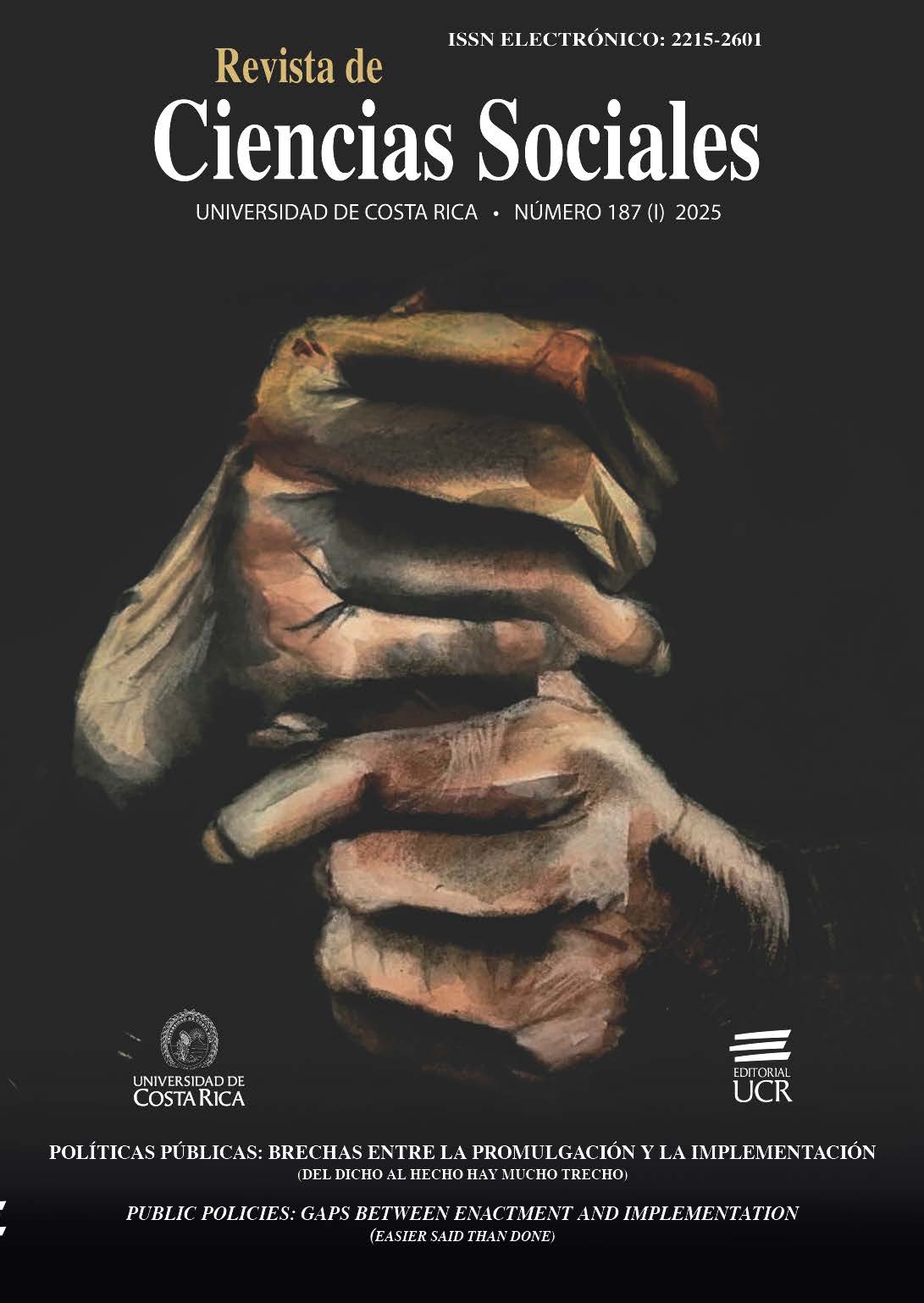Public Policies: gaps between enactment and implementation
DOI:
https://doi.org/10.15517/jrs2w052Keywords:
government policy, social inequality, human rights, artificial intelligence, governanceAbstract
Public policies generally originate at the formal level, through legal instruments such as laws, decrees, guidelines, or directives, depending on the state institution that issues them, whether the Legislative Branch, the Executive Branch, or other bodies empowered to do so. These instruments, developed through normative procedures, generally reflect negotiation processes between different social sectors interested in the issue the policy addresses. However, there is often a gap, sometimes small or sometimes significant, between the promulgation of public policy and its effective implementation. This gap can manifest itself in substantive terms, when the actual execution differs significantly from the literal content of the legal instrument that establishes it. In some cases, what is implemented is minimal; in others, a coherent application is achieved that faithfully reflects what was promulgated. The magnitude of this gap depends largely on the power dynamics between the social actors involved, who, in many cases, participated in the initial stages of formulation. Understanding these tensions and challenges is essential for critically analyzing the life cycle of a public policy, from its normative inception to its actual impact on society.
Downloads
Downloads
Published
Issue
Section
License
Al someter un artículo para su publicación, las y los autores aceptan que, además de la versión impresa, se divulgue también en forma digital en el sitio web de la Revista y en bases de datos virtuales.
Se autoriza la reproducción total o parcial del o los artículos solo con permiso expreso de la Revista y del autor.
La Revista se rigue bajo la Licencia Creative Commons Attribution-NonCommercial-No Derivs 3.0 Costa Rica






